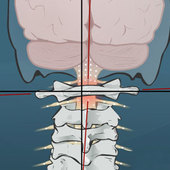Creating Secondary Vitals (2◦V)
In 2011, while taking a graduate level course on the Nature of Pain, a comment was made by a fellow participant that the assessment of pain should be a vital sign. Vital signs typically consist of temperature, blood pressure, pulse, and breathing; when these are present, it means you’re alive.
The comment on what should be considered a vital sign made me think that if pain was to be considered a vital sign, there were a lot of other things that should also be included. There is a big difference between people’s quality of health, and being alive is just the minimum requirement. How do we add life to our years and improve our likelihood of being around for many years to come in a way that is enjoyable – how do we age gracefully?
As a student of health, I can share with you that you are moving in one of two directions—either towards or away from disease. As a health care practitioner, the people that I really want to help are my patients. My desire to help people create a successful health plan led to the conception of the first version of our Secondary Vitals evaluation in 2012. Our goal was to gain clarity on someone’s state of health at a certain point in time. The structure of Secondary Vitals allows participants to make educated decisions about how to prioritize where to put effort as they make a plan for health creation.
Being healthy speaks to your ability to ‘heal thy self’, as my daughter Chloë pointed out when learning about compound words in elementary school. This inadvertently creates the need to have something happen to you that you must heal from to know if you’re healthy. Is the absence of disease enough?
“So you’re alive – now what?”
As we look to concentrate on health promotion as opposed to disease avoidance, there are a variety of areas that can to be explored. How likely you are to heal, given a particular set of circumstances, can be enhanced by concentrating on making improvements in your capacity for adaptation.
But, what is Secondary Vitals (2◦V)?
It takes only 20 minutes to take a measure of your Secondary Vitals (2◦V). Included in the basic test are gauges of posture, flexibility, pain, social satisfaction, cardiovascular health, and pH level. Once measured, we work with you to create a plan to tackle the issues that are identified. This can be done individually in our office, or remotely as a corporate team event. Resolutions for 2020 are just around the corner, and a 2◦V score can help direct your efforts to create structured goals and finish lines. Adding in rewards for achievements or participating with co-workers in an office competition can make improving your health even more enjoyable.

The key to health creation is found in creating a plan of action based on solid information. As I often say, socks and shoes are both important, but there is a particular order of putting them on that seems to work better. This is the truth for many health care interventions. We help people in a variety of ways, either directly as educators, clinicians or consultants, or through health plan creation as interdisciplinary consultants. I hope this blog gives you some information and desire to explore these concepts in more detail; you can figure this out by yourself or with our assistance. I look forward to chatting with you further about how we can support you in being as healthy as possible.
We have the opportunity to see what some people would consider miracles on a very regular basis, and we are deeply grateful for this privilege. Remember, we always make room for your referrals and look forward to hearing from you!

Dr. Jeff Scholten
NUCCA Chiropractor
The Vital Posture™ Clinic
Calgary, Canada




